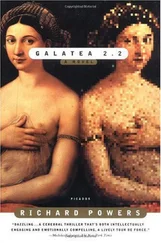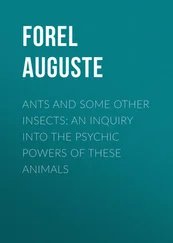“I’m not a writer,” he answered. But perhaps he’d inadvertently given up the day job, as well.
Back in Rome on their last evening, he lost control. They were sitting at a café on the Via Cavour. She reminded him that they were having drinks that night with a Flemish couple she had met.
“When did you tell me this?”
“Which time?” She sighed. “Male pattern deafness.” What other wives might have called self-absorption. “Come on, Man. Where are you?”
Against his better judgment, he told her. He hadn’t mentioned the reviews for days. “I’m wondering if they might actually be right.”
She threw her hands into the air like a ninja cheerleader. “Oh, stop! They’re not right. They’re just professional climbers.” Her composure maddened him. He found himself saying absurd things in increasingly incomprehensible fragments. Finally he got up and left. Idiot, fool: he wandered at random through the Roman web, as the sun sank and the twisting streets disoriented him. He got back to the hotel after eleven. The Flemish couple had long since left. Even then, she did not rebuke him as he deserved. He’d married a woman who simply didn’t understand drama. That night and on the plane the next day, she extended the same professional cool she gave her most erratic Wayfinder clients.
They made it back home intact. Sylvie was right: no ordeal awaited. Cavanaugh called with a few reassuring reviews, figures, and translation offers. But Weber still had book promotion to get through before summer’s end. Readings, print interviews, radio: more proof, if his research team needed any, that a man couldn’t serve two masters.
At a reading at Cody’s in Berkeley, a member of the otherwise respectful audience asked how he responded to the press’s suggestion that his personalized case histories violated professional ethics. The audience hissed at the question, but with a disguised thrill. He stumbled through an answer that had once been automatic: The brain was not a machine, not a car engine, not a computer. Purely functional descriptions hid as much as they revealed. You couldn’t grasp any individual brain without addressing private history, circumstance, personality — the whole person, beyond the sum of mechanical modules and localized deficits.
A second listener wanted to know if all his patients always gave full approval. He said of course . Yes, but with their deficits, did they always fully understand that approval? Brain research, Weber said, suggested that no one could ever second-guess another’s understanding. Even as he spoke it, it sounded incriminating. Even he could hear the blatant contradiction.
Weber looked out into the standing-room-only crowd. One attractive middle-aged woman in a madras dress held a miniature video camera. Others had audio recorders. “This is starting to feel a little like a feeding frenzy,” he laughed. Something off with the timing. The audience hushed, nonplussed. He caught a rhythm at last, limiting the damage. But fewer people waited in line for signed copies than the last time he’d come through town.
The ordinary colors of his day took on a new cast: all too much like a case he’d once detailed. He knew Edward only from the literature, but in Wider Than the Sky , Weber made Edward his own, describing him, perhaps, as if he’d discovered him. Edward was born partly color-blind, like ten percent of all men, many of whom never discover their condition. A lack of color receptors in Edward’s eyes left him unable to distinguish reds and greens. Color blindness was itself uncanny: the unsettling suggestion that any two people might disagree about exactly what hue a given object actually had.
But Edward’s color vision was stranger still. Like far fewer people — one in tens of thousands — Edward was also synesthetic. Edward’s inherited synesthesia was consistent and stable throughout his lifetime. His took a standard form: seeing numbers as colors. For Edward, numbers and hues actually fused , the way that smoothness usually fuses with comfort and sharpness with pain. He complained as a child that the colors on his number blocks were all wrong. His mother understood; she had the same fused wiring, too.
Those with the condition often tasted shapes or felt, in their skin, the texture of spoken words. These were no simple associations, no flights of poetic fancy. Weber had come to see synesthesia as something as durable as the smell of strawberries or the chill of ice: a left-hemisphere function, somehow buried beneath the cortex, a signal-crossing that every brain produced but that only a select few brains presented to consciousness, something not quite shed in evolution, or perhaps the advance scouts of mutation’s next reel.
Edward, both color-blind and synesthetic, was his own story. The look, sound, or thought of the numeral one caused him to see white. Twos were bathed in fields of blue. Every number was a color, the way that honey was sweet or the interval of a minor second was dissonant. The problem came with fives, and nines. Edward called them “Martian colors,” hues unlike any that he’d ever seen.
It puzzled the doctors at first. After some testing, the truth came out: those numbers were red and green. Not the “red” and “green” that his eyes saw and his mind had learned to translate. But red and green as they registered in the brains of the color-sighted — pure mental hues for which Edward had no visual equivalents. Colors that his eyes could not detect still registered in his undamaged visual cortex, triggered by numbers. He could perceive the shades by synesthesia; he just couldn’t see them.
Weber had told the story years ago, concluding with a few thoughts about the locked room of personal experience. The senses were a metaphor at best. Neuroscience had revived Democritus: we speak of bitter and sweet, of hot and cold, but we come no closer to actual qualities than a rough thumbnail. All we could exchange were pointers— purple, sharp, acrid —to our private sensations.
But years ago, these ideas had been for Weber just writing, without aroma or tone. Now the words came back, rasping and clanging, springing up everywhere he looked: Martian colors, hues his eyes could not see, flooding his brain…
In August, he flew to Sydney, an invited speaker at an international conference on “The Origins of Human Consciousness.” He had his problems with the evolutionary psychology crowd. The discipline was too fond of explaining everything in terms of Pleistocene modules, identifying gross, falsely universal characteristics of human behavior, then explaining, with ex post facto tautology, why they were inevitable adaptations. Why were males polygamous and females monogamous? It all came down to the relative economics of sperm versus egg. Not exactly science ; but then, neither was his writing.
To Weber, much conscious behavior was less adaptation than exaptation. Pleiotropy — one gene giving rise to several unrelated effects — complicated attempts to explain characteristics in terms of independent selection. He had serious doubts about walking into a room full of evolutionary psychologists. But the meeting gave him a chance to try out a talk that he didn’t dare present anywhere else: a theory about why patients who suffered from finger agnosia — the inability to name which finger was being touched or pointed to — often also suffered from dyscalculia — mathematical disability. He wasn’t expected to break new ground with his speech. He was simply supposed to play himself, tell some good stories, and shake lots of hands.
The flight from New York to Los Angeles began badly, when his shoes triggered the security detectors and they found a nail-care kit he’d stupidly packed in his carry-on. It took a while to prove to the guards that he was who he claimed to be. In L.A., he transferred to the Sydney plane, which sat at the gate for an hour before being canceled. The pilot blamed a hairline crack in the windshield. Forty people on the plane: doubtless the crack would have looked smaller had there been four hundred.
Читать дальше












